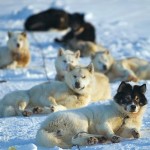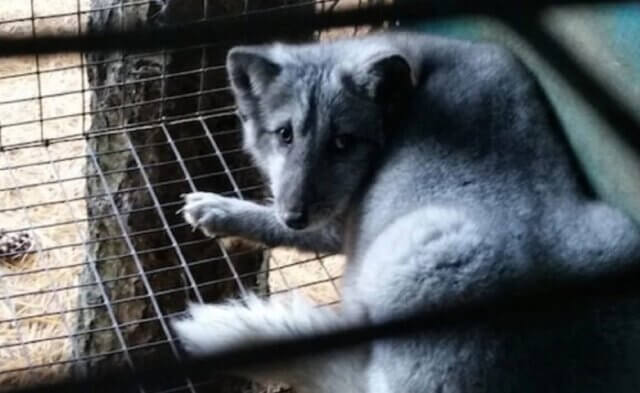
US Mission Canada/cc by 2.0
Update: Tragedy struck the Iditarod when a snowmobiler killed a dog named Nash and injured three other dogs and a musher. Read more here.
Running a marathon is a physically grueling feat—one that most of us don’t even attempt. For those who do and finish, it’s considered a remarkable accomplishment. So try to imagine running four marathons in a single day, and throw in biting winds, treacherous terrain and freezing temperatures. Then do it all over again for eight more days. That’s exactly what the dogs used in the Iditarod are forced to do.
Since 1995, the top finishers have covered the approximately 1,000-mile course in nine days or fewer, including one mandatory 24-hour stop. This means that dogs run more than 100 miles a day while pulling sleds weighing hundreds of pounds through some of the harshest weather conditions on the planet. Temperatures have plummeted to 60 degrees below zero. Mushers revel in taking the credit for finishing the race, even though they ride, eat and sleep while the dogs burn 12,000 calories a day and do all the work. Sports writer Jon Saraceno, who coined the term “Ihurtadog,” calls the race “frenzied lunacy.”
Although death records were not kept in the early days, we do know that 26 dogs used in the Iditarod have died just since 2004. Rule 42 of the official Iditarod rules says that some deaths may be considered “unpreventable.” The animals have been run over by snowmobiles or died of pneumonia after inhaling their own vomit. Countless dogs suffer from diarrhea, dehydration, intestinal viruses or bleeding stomach ulcers. In referring to the Iditarod, veterinarian Barbara Hodges said, “The race would violate animal cruelty laws … in 38 states and the District of Columbia. Of course, Alaska has no such law.”
Many dogs are routinely given antacids to try to prevent gastric ulcers. A veterinarian who studied the race’s effects on the animals found that exercise-induced stomach disease may affect 50 to 70 percent of the dogs who enter, a number significantly higher than is seen in non-racing dogs. Dogs with ulcers typically show no symptoms until the condition becomes life-threatening and they start to bleed internally and vomit, which may cause them to choke and die.
Life off the trail is equally grim. Most kennels keep dozens of dogs, who live on short chains with only overturned barrels or dilapidated doghouses for shelter, their world extending no farther than their 6-foot tether. And slow runners are doomed. As sports columnist Jeff Jacobs wrote, “The cruelty is in the vast distance. The cruelty is in some training techniques that would turn your stomach. This doesn’t begin to address some manuals that recommend killing dogs that don’t cut the mustard. They call it culling. Really, it’s murder.” There’s no requirement to report how many dogs are “culled,” so the death toll is unknown.
Although organizers attempt to put a historic spin on the race, winning the Iditarod is all about bragging rights and the cash and truck awarded as prizes. Gambling with animals’ lives is ethically indefensible. From bear-baiting to cockfighting, many activities once considered acceptable have since been condemned as we learn more about the suffering endured by all living beings when exploited for entertainment. Dogs deserve to be part of a family, not treated like snowmobiles with fur.





